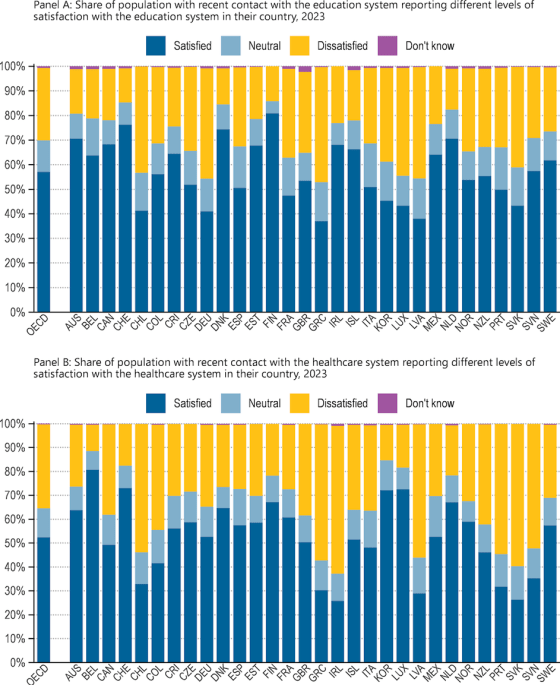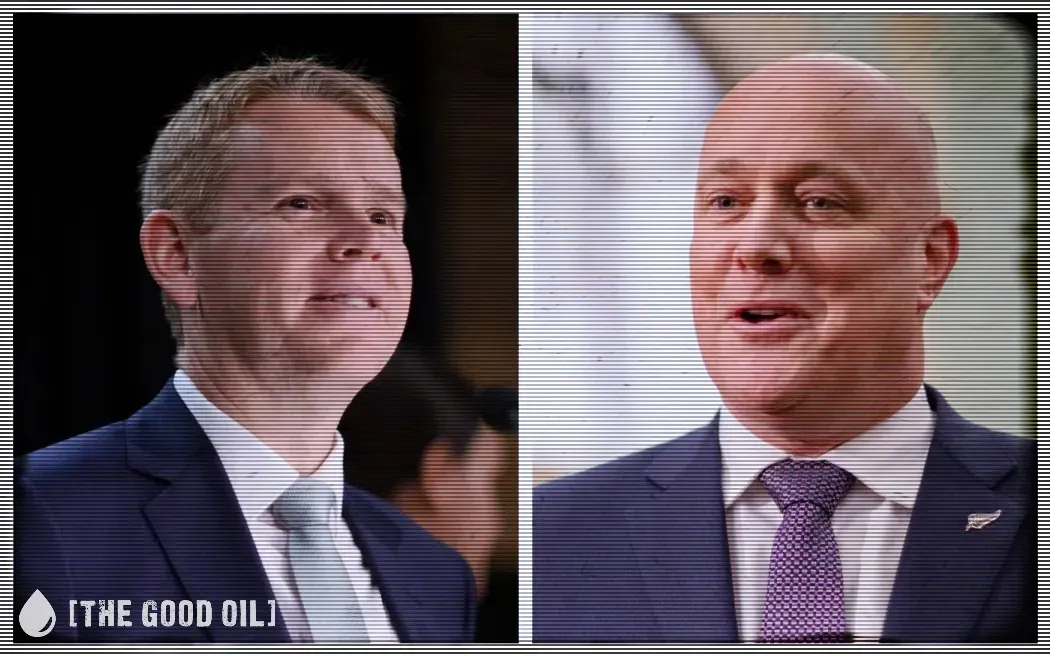Alwyn Poole
Founded and was the head of Mt Hobson Middle School in Auckland for 18 years. MH Academy is now an in person private school for Years 11–13. There is now a nationwide online provision called Mt Hobson Academy Connected for Years 1–13.
You would think from they way that representatives speaking to MPs this week in opposition spoke of themselves, and their schools, that the sun shines out of their educational backsides.
Unfortunately the latest OECD studies show that a significant portion of the NZ population doesn’t think so – and it is yet another awful international comparison.
According to the 2024 OECD Survey on Drivers of Trust in Public Institutions only 55 per cent of the NZ population are satisfied with our education system. The OECD average is 57 per cent and NZ is well behind Australia (71%) as well as Mexico, Netherlands, Canada, Costa Rica, Israel, Finland, etc. And also SWEDEN – who during the week the PPTA people derided for having Charter Schools. (NB: See below NZ not so flash on health either. The survey also includes results on trust on whether bureaucrats and innovative and other measures of trust in our ministries).

The education result is, of course, a huge indictment on the Ministry of Education whose purpose is: We shape an education system that delivers equitable and excellent outcomes.
It is also a huge indictment on the teacher unions. The PPTA’s mission statement is: To advance the cause of education generally and of all phases of secondary and technical education in particular.
The outstanding Maryanne Spurdle of Maxim Institute makes these observations on the OECD survey.
Finland topped the list with 81% satisfied; Switzerland and Denmark boast 76% and 74%. All have decentralised education systems where regions manage operations. In Denmark, municipalities also fund schools up to lower secondary level. Upper secondary schools are centrally funded and self-governing.
In the Netherlands, 71% are satisfied. Both public and private schools are funded equally by the state, and funding depends on outcomes.
In Australia, 36% of students attend private and Catholic Schools that are heavily subsidised by state and central governments.
Next time someone insists that only the Ministry of Education can improve education, remember this: Parents are more satisfied with schools when educators and communities have more say than bureaucrats, unions, and politicians. And providing meaningful school choice always serves students better.
In New Zealand, some still believe that the introduction of Charter Schools will devastate public schools. In fact, returning some schools to communities and iwi is exactly what public education needs.
Why? Because more than 500 state schools are over-capacity – a massive problem that new Charter Schools will ease. And because in secondary schools, 27% of vacant teaching positions are going unfilled and a growing number of teachers leave the profession mid-career. Independent schools, however, can recruit more broadly and have more liberty to create appealing working conditions.
Rather than worry about publicly funding private operators – which we happily do with services from GP clinics to emergency housing providers – let’s be afraid of imitating Greece. Its centralised education system spends no public funds on independent schools, and it was the least popular in the OECD report: 37% of Greeks are satisfied, 47% are dissatisfied.
This article was originally published on the author’s Substack.







